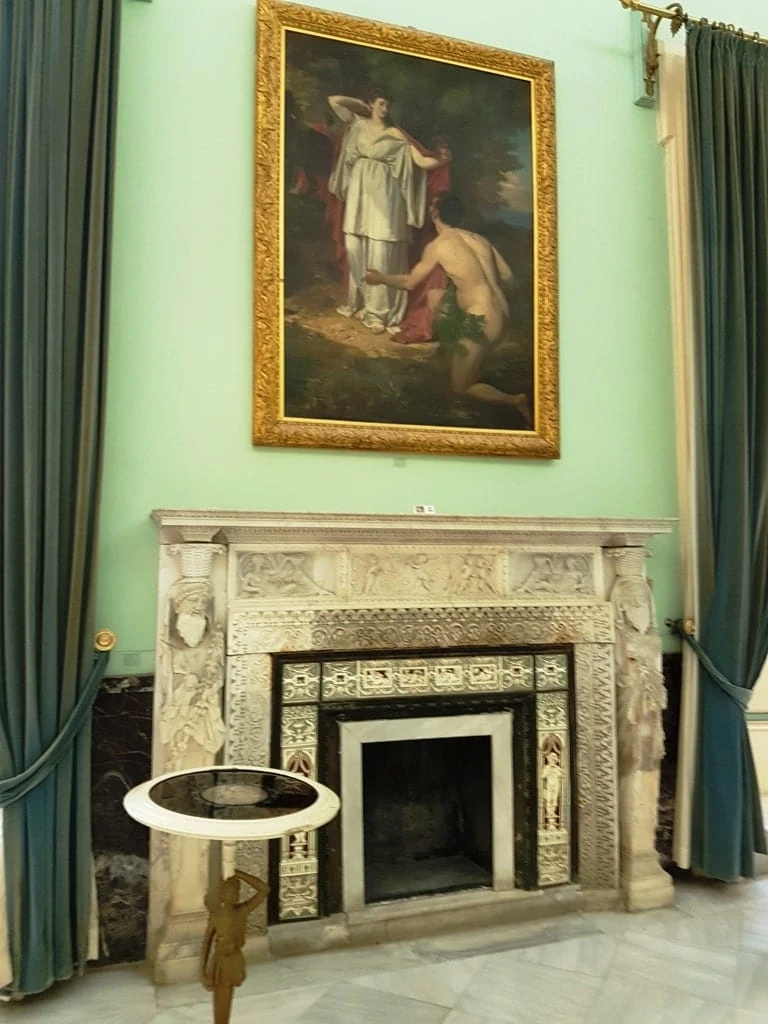The Achillion Palace (also spelled as Achilleion) is a palace in Gastouri, on the Greek island of Corfu. The Achillion’s other name, the ‘Sisi Palace’, derives from its original owner – it was constructed for Empress Elisabeth of Austria, whose nickname was ‘Sisi’. Today, this magnificent palace functions as a museum run by the Greek National Tourism Organisation and is open to visitors year-round.
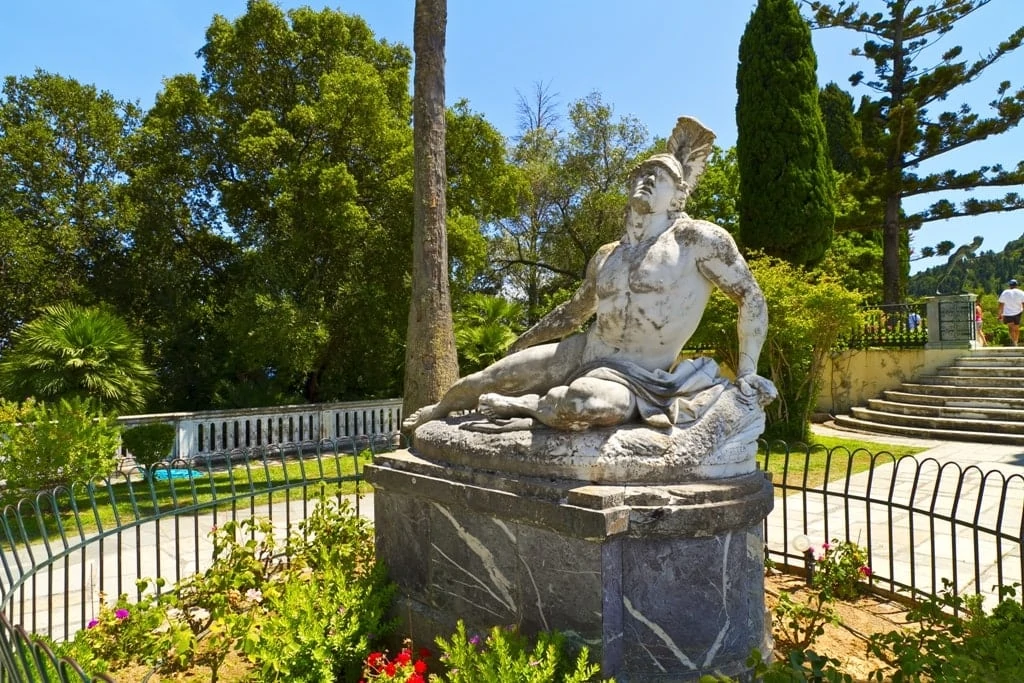
A Guide to Achillion Palace (Sisi Palace)
History of Achillion Palace
The origins of the Achillion Palace are tragic. Elisabeth became Empress of Austria through her marriage to Emperor Franz Joseph I at the age of just 16 in 1854, but she found the strict protocols of court life extremely stressful and appears to have suffered from regular bouts of depression.
Her domineering mother-in-law Archduchess Sophie also contributed to her ill health, as the two were often at odds over the raising of Elisabeth’s children. As a result, Elisabeth traveled regularly to escape the tense atmosphere of the court and developed a love of Greek culture through her visits to Corfu.
However, it was the 1889 Mayerling incident, in which Elizabeth and Franz Joseph’s only son Rudolf died alongside his lover Baroness Mary Vetsera in an apparent murder-suicide, that precipitated the building of the Achillion Palace.
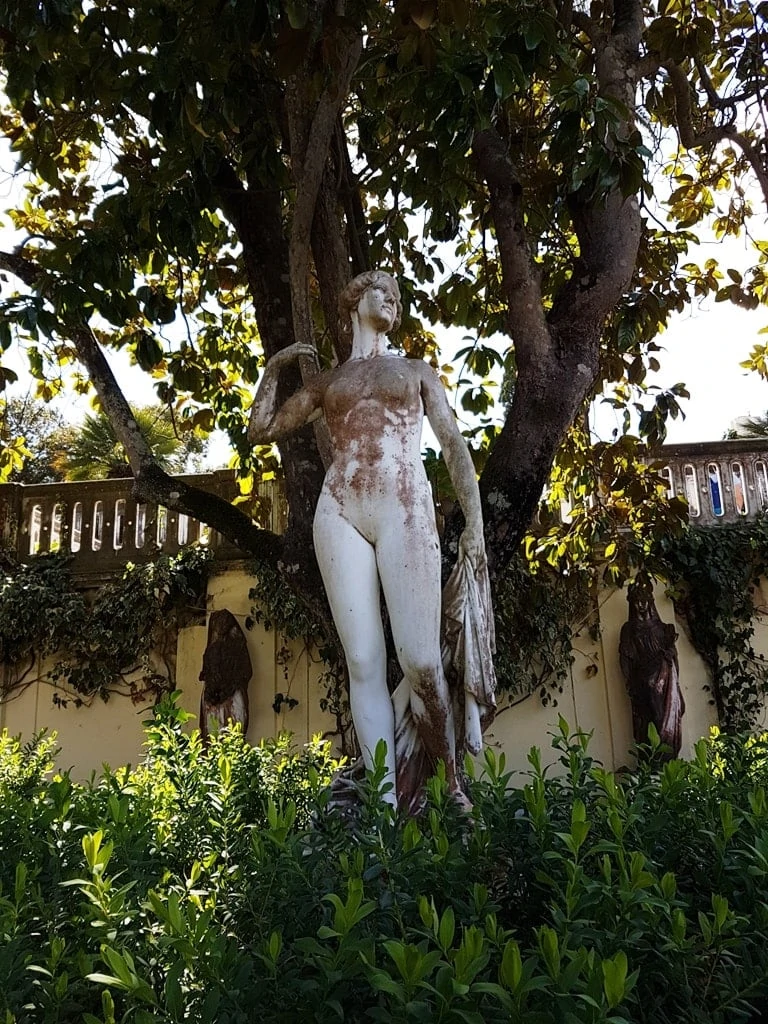
Distraught by her beloved son’s death, Elisabeth commissioned the building of a palace on Corfu, on a site formerly belonging to the philosopher and diplomat Petros Vrailas Armenis. She had actually owned the site since 1888, but the Mayerling Incident spurred Elisabeth to construct the Achillion, a retreat to which she could escape and grieve for her son.
Elisabeth frequently used the palace until 1896, and after her death in 1898 it was inherited by her daughter. In 1907 the palace was purchased by the German Kaiser Wilhelm II who used it as a summer residence. Wilhelm used the palace extensively, and as a result, a great deal of diplomatic business was carried out there when he was in residence.
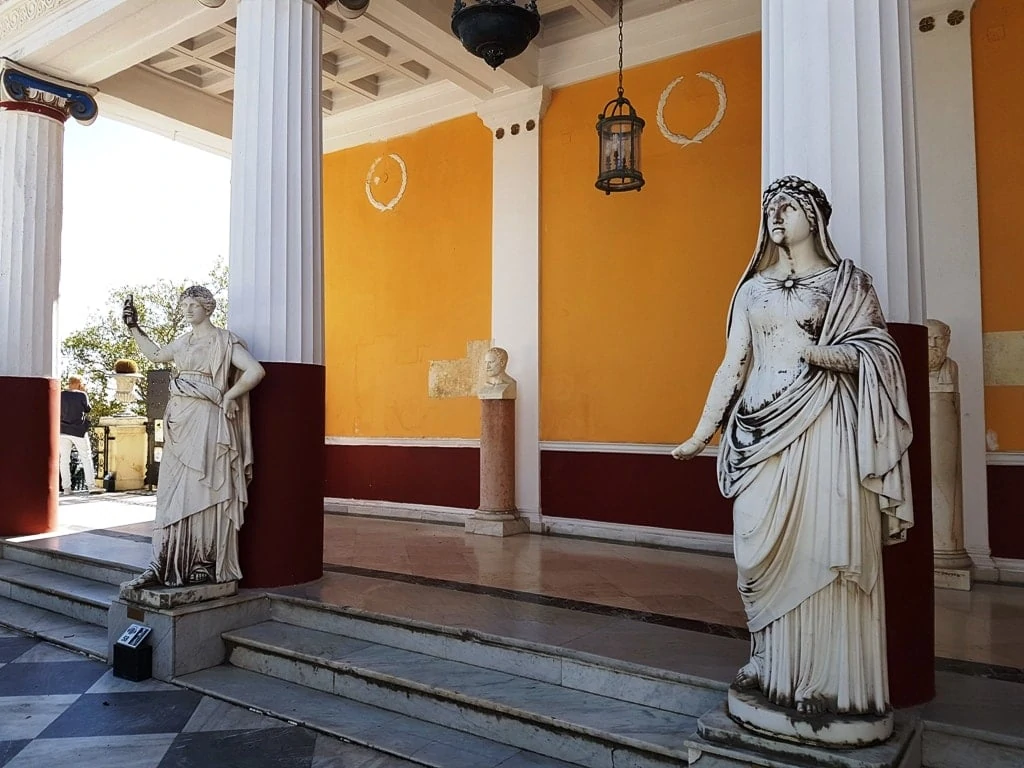
During World War One the palace was used as a military hospital, before becoming a possession of the Greek state as part of war reparations. From 1962-1983, the building was leased to a company that converted it into a casino and museum – interestingly, the casino scene of the 1981 James Bond film, For Your Eyes Only, was filmed at the Achillion. Today, the palace functions as a museum and is a popular tourist destination.
Description of Achillion Palace
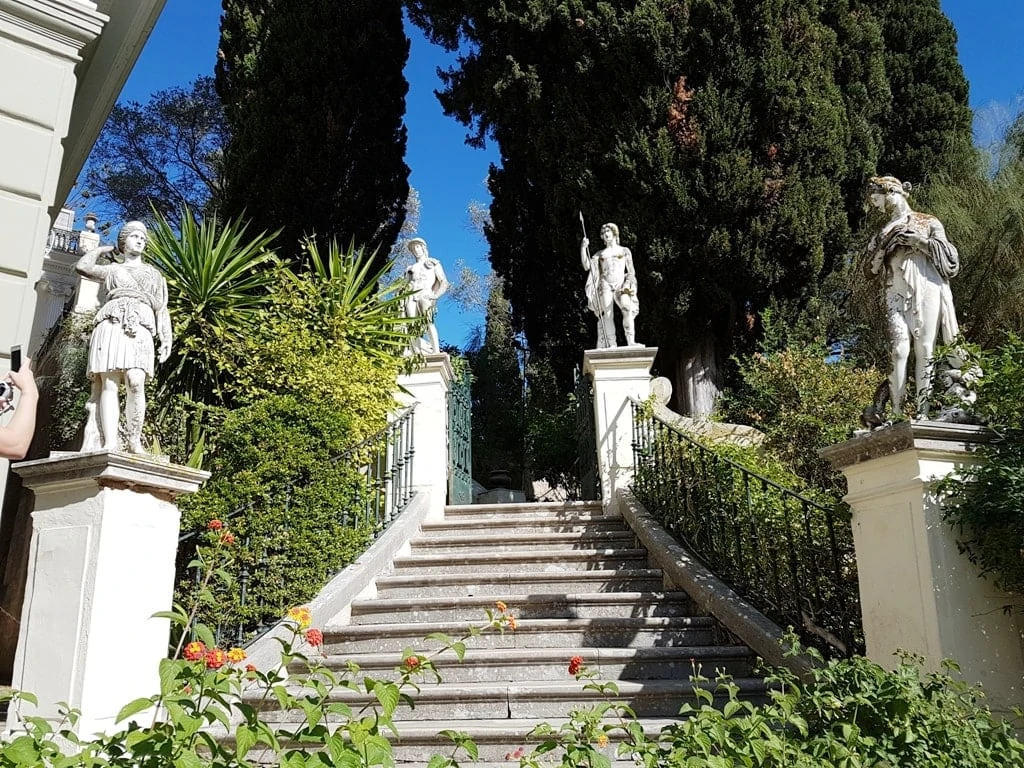
Inspired by Elisabeth’s love of Greek history and culture, the Achillion was constructed to resemble an ancient Phaeacian palace – Phaeacia was a region in Greek mythology, mentioned by Homer as the final stopping place of Odysseus before returning to Ithaca.
This platonic romanticism is reflected in the name of the palace, as it was named after the Greek hero Achilles. As a result, the palace and gardens contain classical statues and monuments, depicting philosophers, and ancient gods and goddesses.
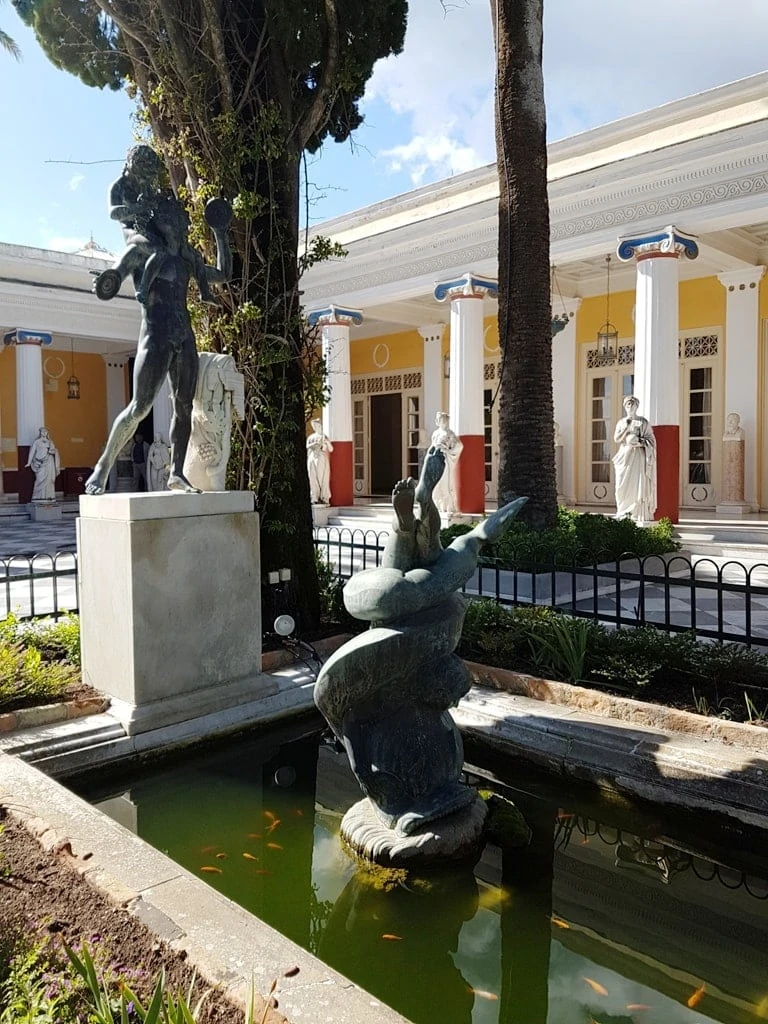
As the name suggests, the primary motif of the palace is Achilles himself. Accordingly, paintings and statues of the mythical hero can be found throughout the main hall and gardens, including tragic and triumphant scenes from the Trojan War.
Ernst Herter’s sculpture Dying Achilles forms the centerpiece of the palace gardens, which also contain an enormous statue of Achilles which stands 11.5 meters high, a statue of Dionysus with a Satyros, and a statue of Lord Byron.
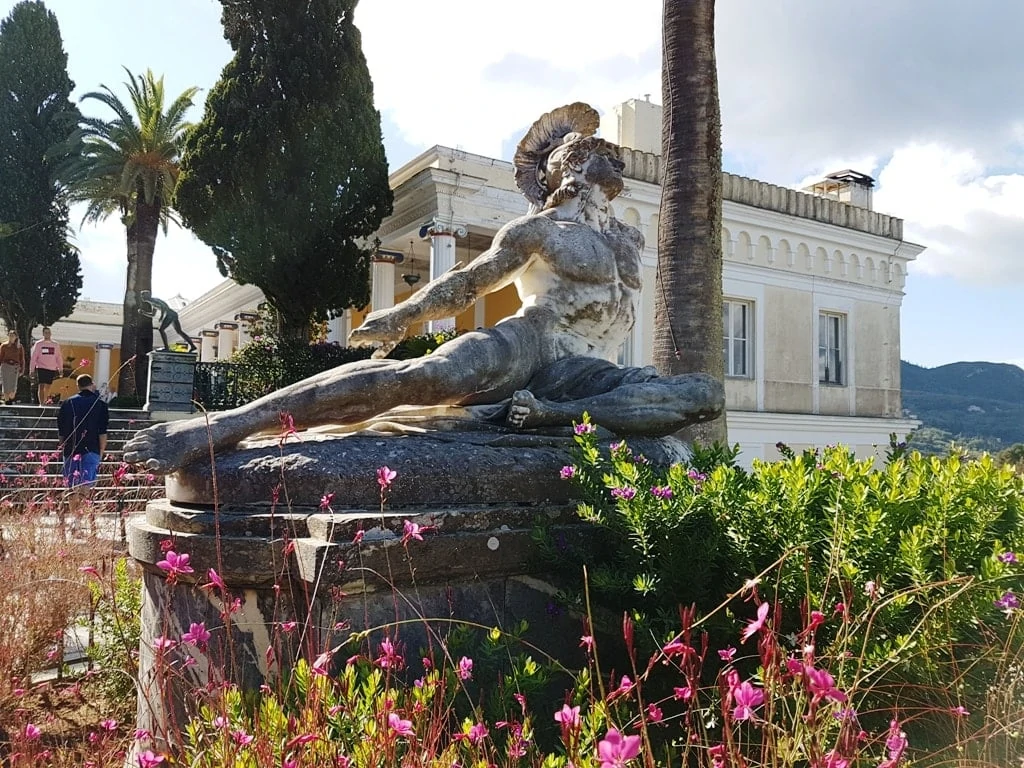
The large statue of Achilles, made of bronze, was a later addition by Kaiser Wilhelm II. Created by the artist Johannes Götz, the sculpture faces north towards Corfu Town, and depicts the Greek hero in full hoplite armor, holding a gorgon’s head. The inscription on the plinth, which read ‘To the greatest Greek, from the greatest German’, was removed after the Second World War.
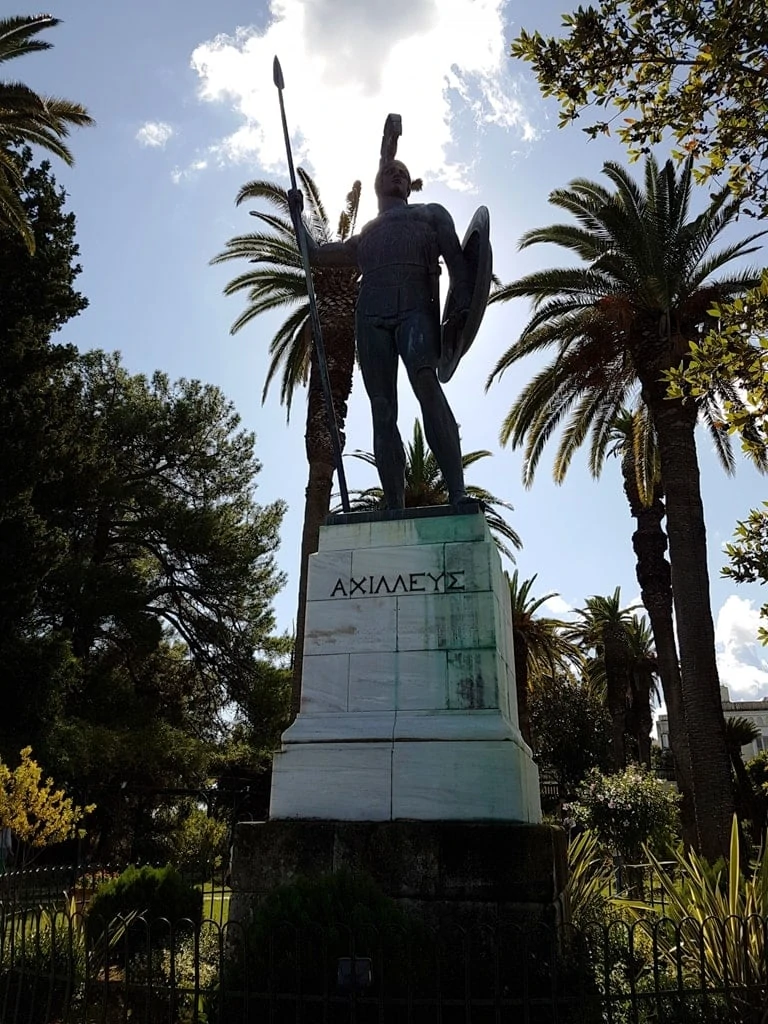
Empress Elisabeth reportedly wrote that she wanted a palace ‘with pillared colonnades and hanging gardens, protected from prying glances — a palace worthy of Achilles’. This was certainly realized in the Achillion, as the Italian architect Raffaele Caritto modeled the large structure of Pompeian models.
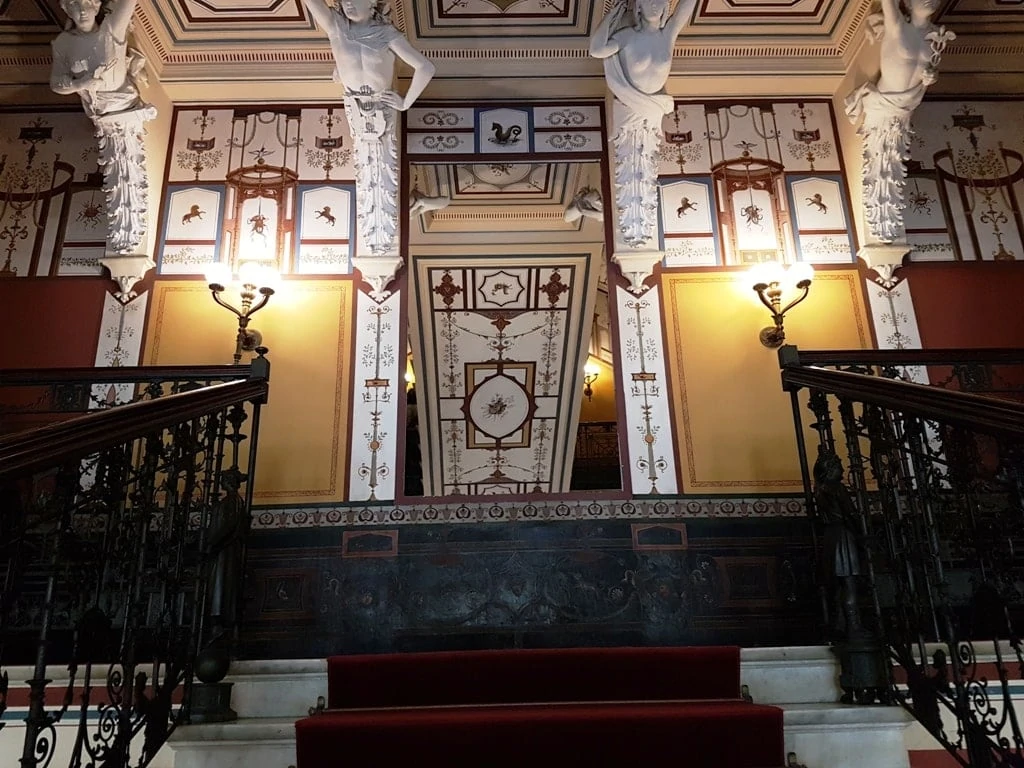
The main entrance to the palace is decorated with impressive columns, whilst the first-floor balcony is flanked by two centaurs. Inside the entrance are further columns, next to which are placed yet more statues of gods and philosophers.
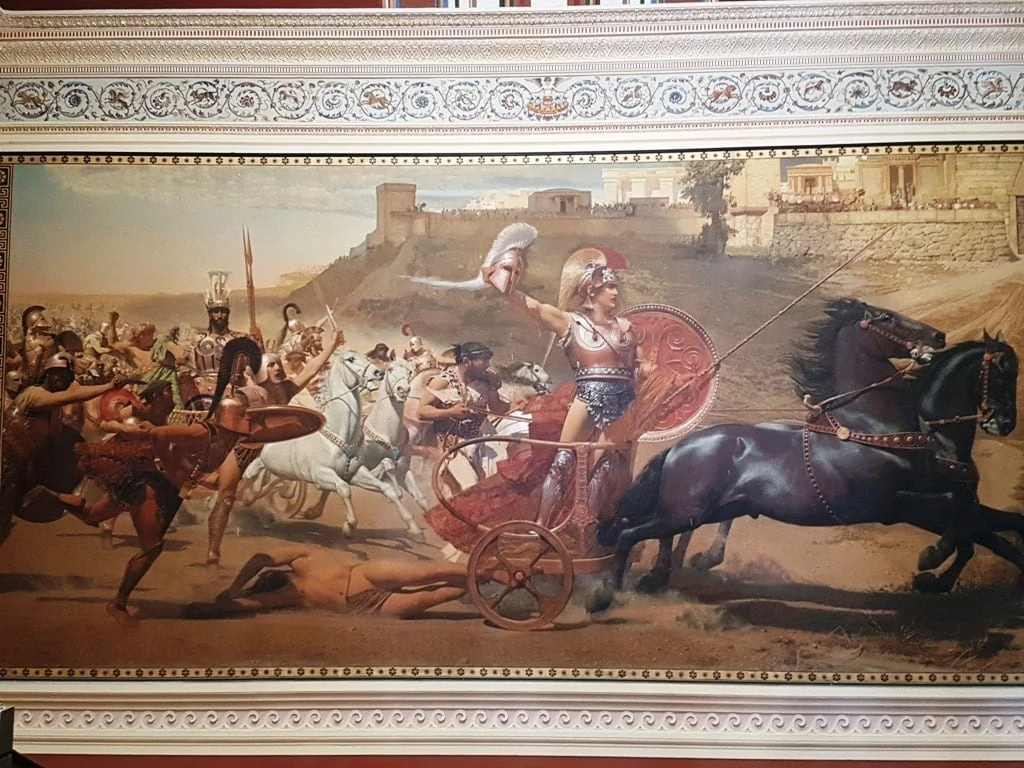
The central hall of the palace is adorned with paintings, with Franz Matt’s depiction of the triumph of Achilles taking center stage. On the second floor can be found a bronze statue of Hermes, while the first floor (where the Empresses apartments were situated) contains statues of the nine muses.
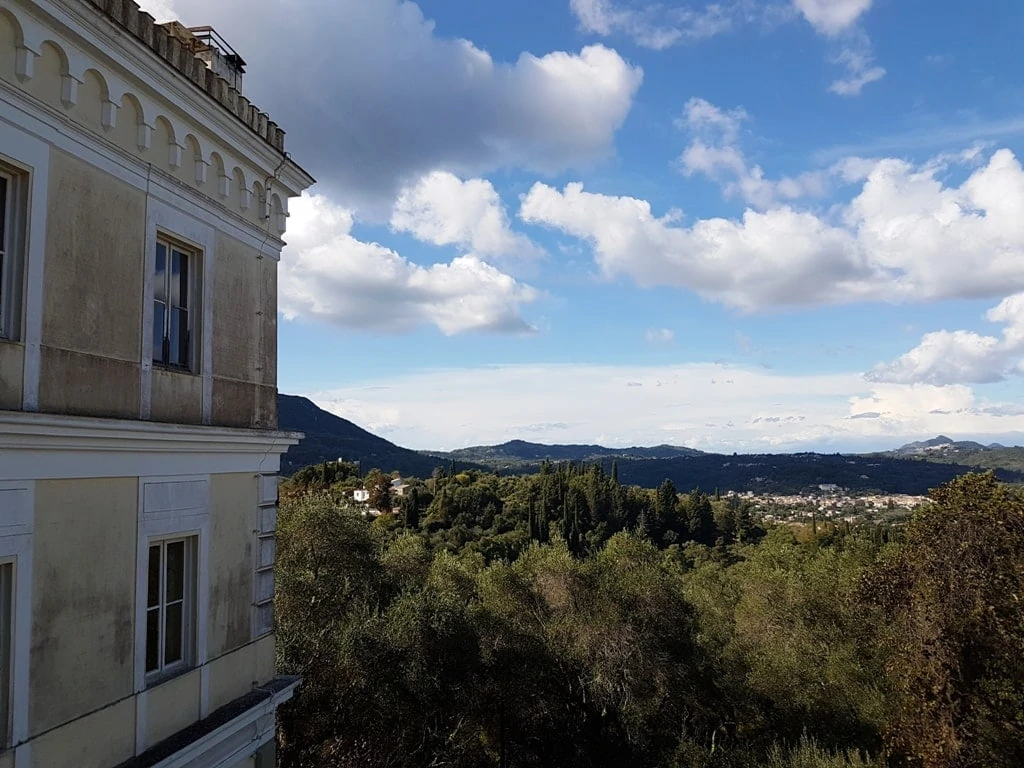
The positioning of the Achillion Palace is picturesque. Standing on a site that occupies an area of some 200,000 square meters, the palace is located just 10 kilometers south of Corfu Town, on the edge of the village of Gastouri.
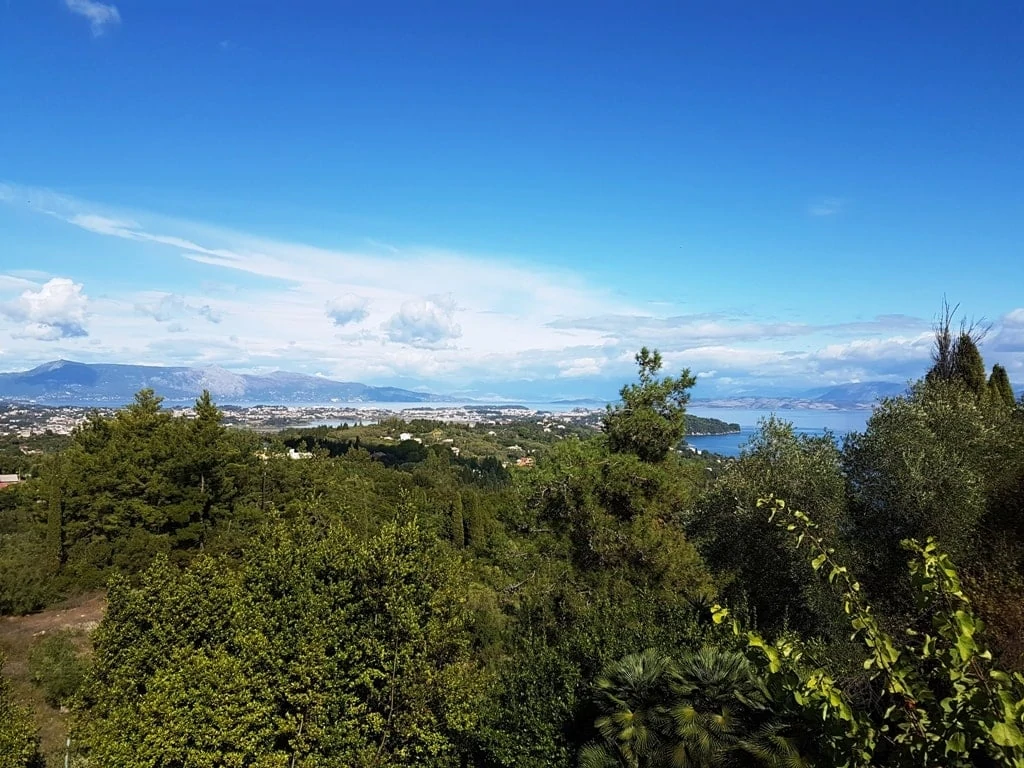
Thanks to its hilltop position, the palace and gardens afford excellent panoramic views, allowing visitors to clearly see Corfu Town to the north, as well as the whole of the south of Corfu stretching away into the Ionian Sea.
Visitor’s Guide to Achillion Palace
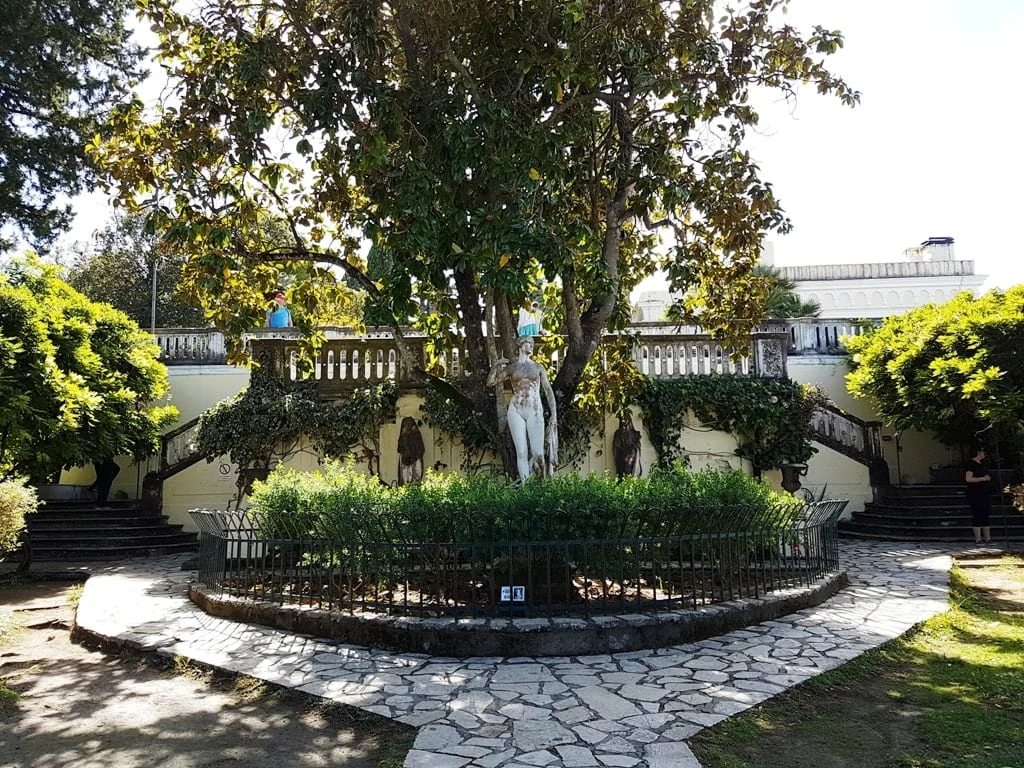
The Achillion Palace is an excellent place to explore in Corfu – visitors can not only marvel at the spectacular palace, owned by Austrian and German Imperial rulers, but they can also enjoy the picturesque gardens and the incredible views that the hilltop location of the Achillion affords.
The palace is easy to reach from Corfu Town, as it is only 10 kilometers to the south of the city. Visitors can drive to the site, or else tour buses operate bringing groups to the Achillion.
Private minibus tours can also be booked, which include transport to the palace and a tour of the Achillion and its grounds.
The palace is open year-round, from 08:00-19:00 on Mondays-Fridays, and from 08:00-14:30 on Saturdays and Sundays. Ticket prices are €2 for children up to the age of 14, €5 for children aged 14-18 and students, and €7 for adults. If you would like to include an audio tour with your ticket, the price is €10. A virtual tour of the Achillion Palace is also available here, on their website.


